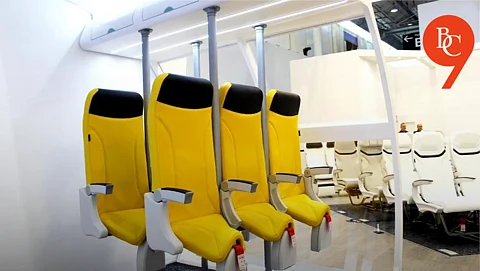

The world of budget air travel may soon look very different. Several low-cost airlines are actively considering the adoption of ‘Skyrider 2.0’ a radical new seating concept that swaps traditional seats for bike-style, padded perches. Designed to allow passengers to lean at an angle rather than fully sit, these seats could make their debut on commercial flights as early as 2026.
Developed by the Italian design firm Aviointeriors, the Skyrider 2.0 is a minimalist, upright seating solution that resembles a padded bicycle saddle more than a conventional airplane seat. Passengers “sit” at an angle, supported by a small saddle, backrest, and footrests, with their legs slightly bent much like riding a bike.
The design’s main goal is to maximize cabin space, allowing airlines to fit more passengers per flight. The Skyrider 2.0 is lighter and takes up less room, which could translate into lower ticket prices and increased revenue for carriers.
For low-cost airlines, every inch of cabin space counts. The Skyrider 2.0 offers several potential benefits:
Airlines could add up to 20% more seats on some aircraft, boosting profits on high-demand routes.
More seats mean lower costs per passenger, theoretically allowing airlines to offer even cheaper tickets.
Lighter seats reduce overall aircraft weight, potentially lowering fuel consumption and environmental impact.
The simple design could speed up boarding and cleaning, reducing ground time between flights.
Budget carriers in Europe and Asia are reportedly in talks with Aviointeriors to pilot the new seating on short-haul routes, where passengers are more willing to sacrifice comfort for savings.
Aviation experts say the move is part of a broader trend toward “densification” in the airline industry, as carriers seek to balance affordability with profitability. “If Skyrider 2.0 gets regulatory approval, it could become a common sight on budget flights worldwide,” said aviation analyst Priya Malhotra.
Aviointeriors is working closely with airlines and regulators to address concerns and refine the design. Demonstration units are expected at major aviation expos later this year, with pilot programs likely in 2026.
